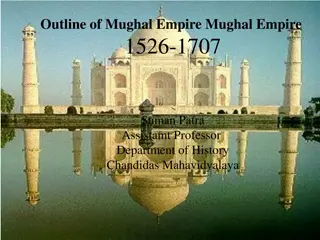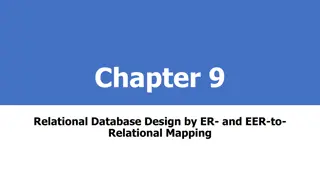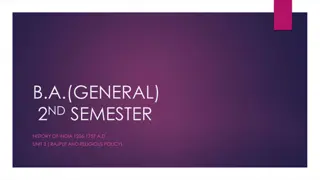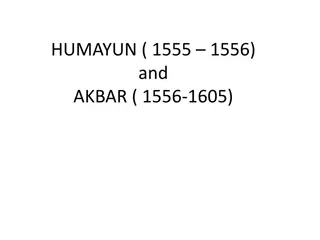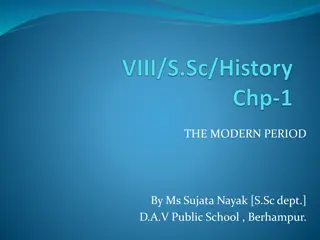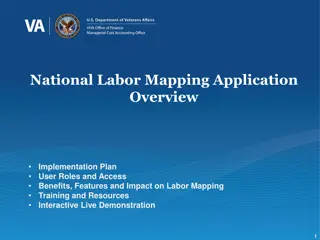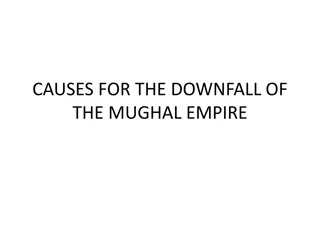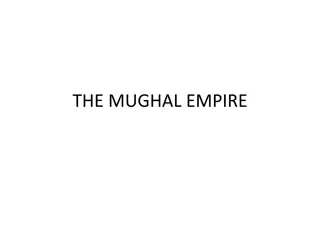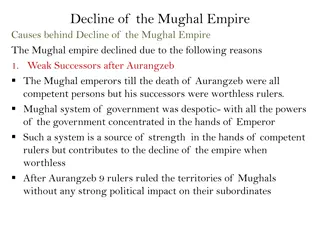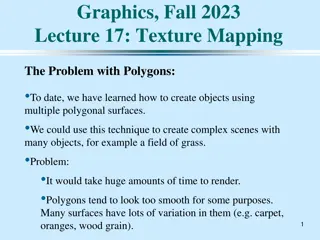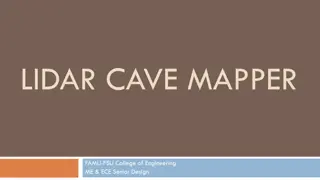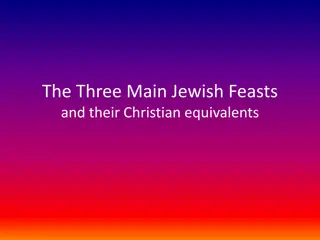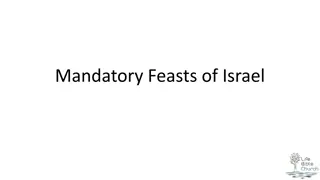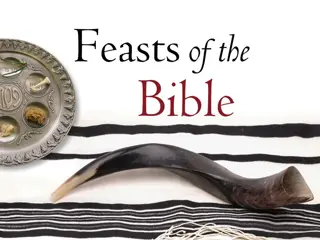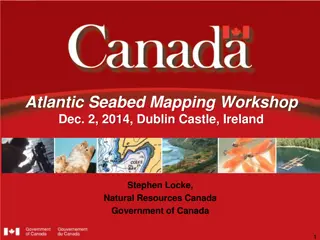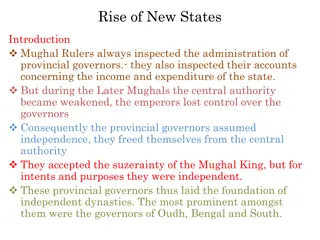Mapping Time and Culture: Mughal Feasts in Early Modern Era
Visual mapping of Mughal feasts in the early modern era provides insight into the historical and cultural connections between Eastern and Western memoirs. By analyzing the role of feasts in a connected history, this project applies a quantitative and visual approach through digital humanities to understand the significance of these cultural events. Key frameworks and methodologies are explored to uncover the impact of feasting in the Mughal Empire.
Download Presentation

Please find below an Image/Link to download the presentation.
The content on the website is provided AS IS for your information and personal use only. It may not be sold, licensed, or shared on other websites without obtaining consent from the author.If you encounter any issues during the download, it is possible that the publisher has removed the file from their server.
You are allowed to download the files provided on this website for personal or commercial use, subject to the condition that they are used lawfully. All files are the property of their respective owners.
The content on the website is provided AS IS for your information and personal use only. It may not be sold, licensed, or shared on other websites without obtaining consent from the author.
E N D
Presentation Transcript
The Emperor Keepeth Many Feasts in the Yeare: Visual Mapping of Time, Space, and Culture in Early Modern Mughal Feasts Justin Wigard Shane Sever wigardju@msu.edu sever1sd@cmich.edu Michigan State University Central Michigan University
Mughal Archive Mughal Empire: descended from Mongolian and Turkish dynasties (early 1500s-mid 1800s) Memoirs of 3 Mughal Emperors, 2 European Travelers: Mughal Emperors: 1st: Babur (Reign, 1526-1530) 2nd: Humayun (Reign, 1530-1540, 1555-1556) 4th: Jahangir (Reign, 1605-1627) European Travelers: Thomas Roe (Present at court during Jahangir s reign) William Hawkins (Present at court during Jahangir s reign)
Overarching Project Examination of connections between Eastern and Western memoirs existing in the same historical and cultural space. Analysis of the feast as a bridge between Mughal memoirs (1500- 1600s) Today s Focus:Apply a quantitative and visual approach through digital humanities to more fully comprehend the role of feasts in a connected history.
Critical Framework 1. Sanjay Subramanyham Macro and Microhistories (Distant and Close readings) Key concept: Connected History Argues for a connected, global history, combining distant and close readings 2. Franco Moretti Graphs, Maps, Trees Quantitative Approach to Lit. Studies Reduces Privilege of canonical texts Key concept: Visual representations of textual data AS collective systems
Methodology 1. Feast 2. Wine 3. Gift 4. Eat 5. Food 6. Celebration 7. Audience 8. Nawroz 9. Ramzan 10.Wedding 1 million words 54,000 unique terms Initial data set, consisting of ten terms:
Relative Frequency Pro: Shows relationships between specific terms Pro: Reveals trends between terms in specific texts Con: Limited via Voyant regarding # of terms in sets.
Radial Map Pro: Reveals multiple layers of data relations. Pro; Terms are organized by relation to central term. Pro: Allows for future expansions in forms of colliding Radial Maps
Bubble Map/ Text Tree Eat Nawroz Wedding Food Celebration Pro: Illustrates causal relationships between terms Audience Feast Pro: Connects peripheral variables Gift Wine Ramzan Con: Limiting, since all terms seem to be at least one level removed from the feast.
Summary of Findings 1) Significance of the Feast across History (Babur, Humayun, Jahangir) Feasts seem to take on larger roles as time progresses, as Jahangir coincides the annual feast with law proclamations, promotions, and travelling. 2) Feast as Cultural Bridge (Roe, Hawkins, Jahangir) European travelers utilized the feasts as opportunities for political bargaining with Mughal Emperors 3) New literary connections emerge through Visual Mapping Traditional close readings overlook the Feast in all but Humayun s memoir
Future Avenues of Research What might emerge when a larger archive is considered (more memoirs and travel narratives)? What other modes of visualization and digital mapping offer insight into this connected history? What connections appear when a larger terminology set is examined?
Sources Babur, Zahir Al-Din Muhammad. Baburnama. 3 vols. Edited and translated by Wheeler M. Thackston, Harvard University, 1993. Balabanlilar, Lisa. The Begims of the Mystic Feast: Turco-Mongol Tradition in the Mughal Harem. The Journal of Asian Studies, vol. 69, no. 1, 2010, pp. 123-147. Dietler, Michael. Theorizing the Feast: Rituals of Consumption, Commensal Politics, and Power in African Contexts. Dietler and Hayden, pp. 65-114. Dietler, Michael and Brian Hayden, editors. Feasts: Archaeological and Ethnographic Perspectives on Food, Politics, and Power. University Alabama Press, 2012. Gulbadan Begim. Humayunnama; or, The History of Humayun. Edited and translated by Annette S. Beveridge. London, 1902. Kirch, Patrick V. Polynesian Feasting in Ethnohistoric, Ethnographic, and Archaeological Contexts: A Comparison of Three Societies. Dietler and Hayden, pp. 168-184. Lal, Ruby. The Domestic World of Peripatetic Kings: Babur and Humayun, c. 1494-1556. The Medieval History Journal, vol. 4, no. 1, 2001, pp. 43-82. ---. Domesticity and Power in the Early Mughal World. Cambridge, 2005. Markham, Clements R. The Hawkins Voyages During the Reigns of Henry VII, Queen Elizabeth, and James I. London, 1978. Moretti, Franco. Graphs, Maps, Trees: Abstract Models for Literary History. Verso, 2007. Roe, Sir Thomas. 1993. The Embassy of Sir Thomas Roe to India, 1615 1619: As Narrated in His Journal and Correspondence, edited by Sir William Foster, Jalandhar, 1993. Stoler, Ann Laura. Colonial Archives and the Arts of Governance. Archival Science, vol. 2, 2002, pp. 87-109. Subramanyam, Sanjay. Connected Histories: Notes towards a Reconfiguration of Early Modern Eurasia. Modern Asian Studies, vol. 31, no. 3, 1997, pp. 735-762.


